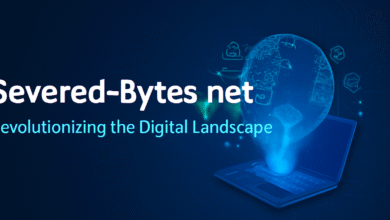Anchor 2.0 Review: The Truth About Its Real Performance

Anchor 2.0 Review explores a significant update to a platform that has already impacted the podcasting industry. Anchor, acquired by Spotify, has long been associated with easy-to-use podcast creation and distribution tools. With version 2.0, users expected a shift not just in design, but in capability, scalability, and monetization. This review digs deeper into whether Anchor 2.0 truly delivers an improved user experience or simply polishes its older version with cosmetic changes. As content creators increasingly demand sophisticated features with ease of use, understanding Anchor 2.0’s evolution is critical for both new podcasters and experienced hosts.
Design and Interface Usability in Anchor 2.0
One of the first changes noticeable in Anchor 2.0 is its updated design, aiming for a cleaner, more modern user interface. Navigation has been improved, with tools reorganized for easier access and workflows simplified. However, while this may appeal to beginners, some seasoned podcasters may feel that the platform has traded customization for aesthetics. The layout ensures faster editing, streamlined publishing, and fewer clicks for common actions, which greatly helps users who prioritize efficiency. Still, a balance between minimalism and control remains key for creative users who want more hands-on settings.
Audio Editing Features and Improvements
Anchor 2.0’s editing tools represent a significant upgrade from its earlier version, offering more flexibility without requiring third-party applications. The integrated audio editor now supports better segmentation, background music layering, and clip rearrangement. These features aim to empower podcasters to craft more professional-sounding episodes directly within the app. While these upgrades enhance productivity, the lack of multi-track editing may still frustrate advanced users. Compared to industry-standard editing software, Anchor’s tools remain somewhat limited, but for mobile or on-the-go editing, they offer convenience and functionality that many users will appreciate.
Podcast Distribution and Monetization
A central feature of Anchor has always been its promise of seamless podcast distribution. Anchor 2.0 maintains this feature, enabling automatic publishing to platforms like Spotify, Apple Podcasts, and Google Podcasts. Additionally, the monetization dashboard has been improved, giving creators better insight into ad revenue, audience size, and sponsorship opportunities. Anchor’s automated ad insertion continues to simplify monetization, although some users might prefer more control over where and how ads appear. For small and medium-sized podcasts, these monetization tools make earning from content more accessible without complex setups or manual partnerships.
Integration with Spotify and Analytics Tools
Anchor 2.0 further deepens its integration with Spotify, allowing creators to add music from Spotify’s library and view detailed analytics. This partnership is a double-edged sword. On one hand, the integration brings powerful data insights—such as audience demographics and episode retention. On the other hand, some users express concern over dependency on Spotify’s ecosystem, fearing reduced platform independence. Nevertheless, the analytics are among the most comprehensive offered by a free podcasting tool, helping podcasters optimize content based on actual listener behavior.
Accessibility and Mobile Experience
Mobile functionality has always been a strength for Anchor, and version 2.0 reinforces that with an even more intuitive mobile experience. Users can record, edit, and publish full episodes using just a smartphone, which is crucial for content creators who don’t have access to full studio setups. Voice messages and collaboration tools are accessible through the mobile interface, encouraging audience engagement and co-host participation regardless of location. For podcasters who operate primarily from mobile devices, Anchor 2.0 sets a benchmark for what a portable podcasting tool should offer.
User Support and Educational Resources
Anchor 2.0 has expanded its help center and added tutorials that cater to both beginners and intermediate users. The guides include step-by-step instructions, videos, and examples to help users create higher-quality podcasts. While the platform is intuitive, the additional educational resources lower the barrier to entry even further. However, real-time customer support is still limited, with most queries handled through FAQs or community forums. This can lead to delays in problem resolution, particularly when technical issues arise with publishing or monetization systems.
Content Ownership and Platform Limitations
One concern that frequently arises in discussions about Anchor is content ownership. Anchor 2.0’s terms and conditions suggest that creators retain ownership, but the relationship with Spotify introduces complexity. Some users fear that content uploaded to Anchor may become harder to move if they later choose to migrate to another platform. Additionally, users are sometimes restricted in customizing RSS feeds or integrating third-party plugins, which limits flexibility. For casual podcasters, these concerns may not matter, but professionals may see these restrictions as reasons to seek alternative hosting platforms.
Community Engagement and Listener Tools
Anchor 2.0 adds more listener interaction features, such as polls and Q&A options for Spotify listeners. These tools aim to enhance engagement and build a loyal community around a podcast. While the feature is primarily designed for Spotify users, its addition is still beneficial for encouraging two-way interaction. Creators can gather feedback, test audience preferences, and even crowdsource content ideas, making podcasting more interactive than before. Though these features are still somewhat limited in scope, they show a promising direction toward making podcasts less of a broadcast and more of a conversation.
Comparing Anchor 2.0 Review with Other Platforms
In comparison to other podcast hosting services like Buzzsprout, Podbean, or Transistor, Anchor 2.0 remains unique for its zero-cost model. While other platforms charge for hosting and storage, Anchor allows users to publish without upfront costs. However, this also means fewer customization options and limited control over data ownership. For creators focused on growth, monetization, and platform independence, premium hosts may offer better long-term solutions. Still, for users prioritizing accessibility, simplicity, and direct Spotify integration, Anchor 2.0 remains a competitive option in the market.
Conclusion
Anchor 2.0 Review represents an incremental but meaningful upgrade over its previous version. It stays true to its core mission of making podcasting easy and accessible to all, while enhancing editing tools, analytics, and distribution capabilities. The deepened integration with Spotify adds both opportunities and potential risks, depending on how much platform independence a creator values. While it may not satisfy the needs of highly advanced podcasters, for the majority of users—especially beginners and intermediates—it provides a reliable, well-rounded platform to launch and grow a podcast. With ongoing updates and community feedback, Anchor 2.0 has the foundation to evolve further, serving as a springboard for voices that might otherwise remain unheard.
FAQS
Is Anchor 2.0 completely free to use?
Yes, Anchor 2.0 remains free for podcast hosting, editing, and distribution, with optional monetization features.
Does Anchor 2.0 allow full content ownership?
Creators retain ownership of their content, but should review Anchor’s terms due to integration with Spotify’s ecosystem.
Can I use Anchor 2.0 without technical experience?
Absolutely. Anchor 2.0 Review is designed for beginners with intuitive tools and tutorials that simplify the podcasting process.
Does Anchor 2.0 support monetization?
Yes, it provides ad insertion and sponsorship options, especially for U.S.-based users, with dashboard tools for revenue tracking.
Can Anchor 2.0 be used on mobile devices?
Yes, Anchor 2.0 offers full functionality on mobile, allowing users to record, edit, and publish directly from their smartphones.




